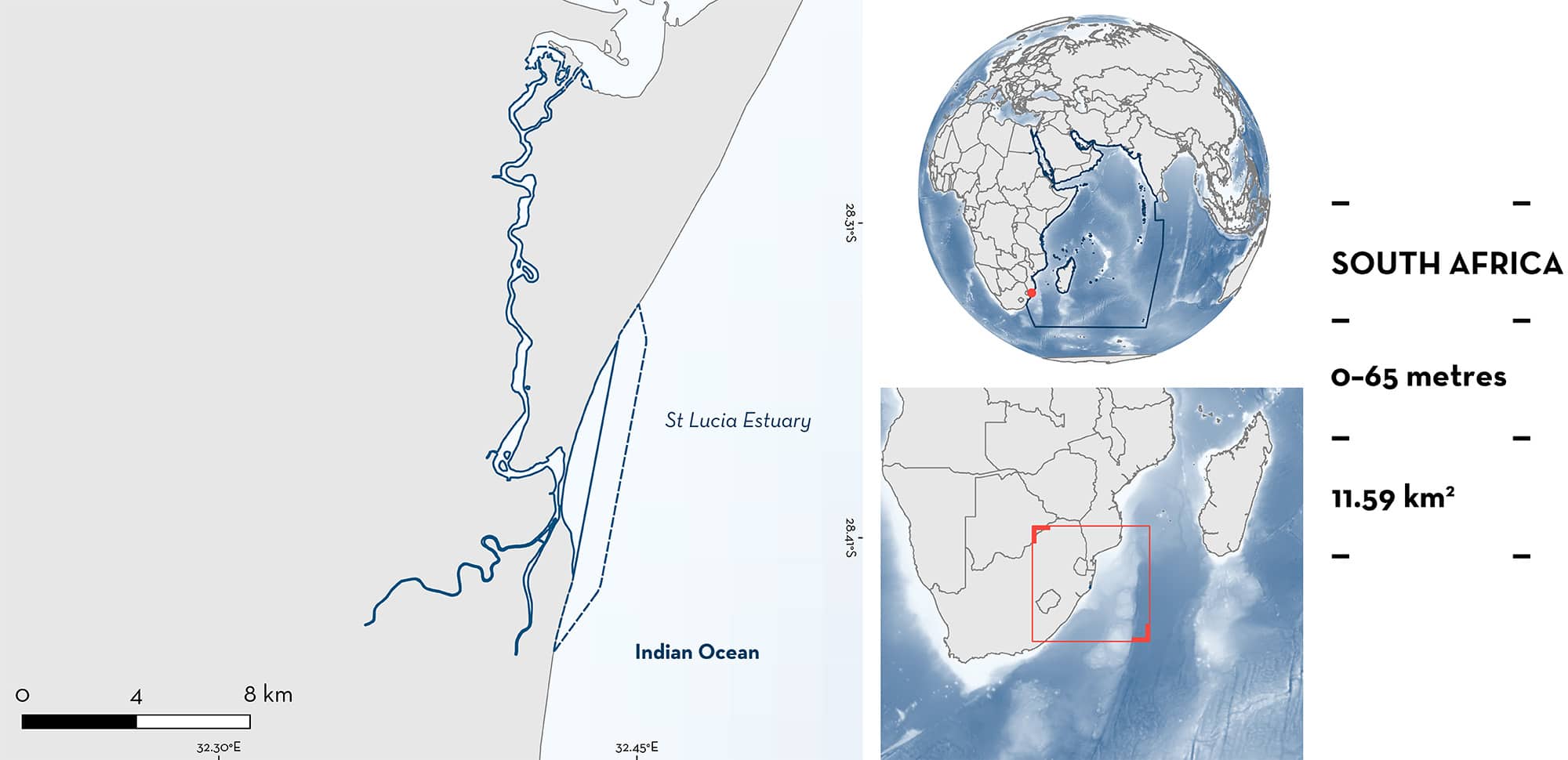ISRA FACTSHEETS
ISRA FACTSHEETS
WESTERN INDIAN OCEAN REGION
St Lucia Estuary
Summary
St Lucia Estuary lies on the KwaZulu-Natal coast of northeastern South Africa. The area comprises coastal waters, the estuary mouth, and the lower estuarine system. The area overlaps with the iSimangaliso marine protected area and partially overlaps the iSimangaliso Wetland Park Key Biodiversity Area. Within this area there are: threatened species and reproductive areas (Bull Shark Carcharhinus leucas).
Download factsheet
St Lucia Estuary
DESCRIPTION OF HABITAT
St Lucia Estuary lies on the KwaZulu-Natal coast of northeastern South Africa. The area comprises coastal areas, an estuary mouth, and an extensive estuarine system. It is part of the largest estuarine lake system in Africa and the largest nursery habitat for estuarine fish species in South Africa (Mann et al. 2002; Whitfield 2005; Forbes et al. 2020). Apart from a short opening due to a big-sea event in 2007, the estuary had been closed from 2002–2021, due to low freshwater input into the lake (Daly et al. 2021). Since then, the estuary mouth has been open again (Daly et al. 2021).
The area overlaps with the iSimangaliso marine protected area (MPA) which is also a World Heritage Site. It partly overlaps the iSimangaliso Wetland Park Key Biodiversity Area (KBA 2023).
This Important Shark and Ray Area is benthopelagic and is delineated from inshore and surface waters (0 m) to 65 m based on the bathymetry of the area.
This Important Shark and Ray Area is delineated from surface waters to a depth of 40 m in pelagic waters based on the maximum depth range of the habitat used by the Qualifying Species.
CRITERION A
VULNERABILITY
The one Qualifying Species within the area is considered threatened with extinction according to the IUCN Red List of Threatened SpeciesTM. The Bull Shark is assessed as Vulnerable (Rigby et al. 2021).
CRITERION C
SUB-CRITERION C1 – REPRODUCTIVE AREAS
St Lucia Estuary is an important reproductive area for one shark species.
Bull Sharks pup at the St Lucia Estuary mouth and use the lake system as a nursery. Historically, 179 immature individuals were caught and tagged in the lake between 1968 and 1970. Many had open umbilical scars, confirming the presence of neonates and pupping in the system (Bass et al. 1973). Subsequently, the St Lucia mouth closed to the ocean between 2002 and 2021 and many sharks in the system perished. However, in 2021 the estuary mouth was opened again, and Bull Sharks were observed pupping at the mouth (Daly et al. 2021). Nine neonate Bull Sharks with open umbilical scars were tagged with acoustic tags at the mouth and monitored for two years. The study showed that four of the tagged neonates recruited into the lower estuary area, but the fate of the remaining five were unconfirmed. It appears that if the mouth is open during the austral summer pupping season, Bull Sharks will pup at the mouth, confirming that the area is still an important pupping ground. The St Lucia Lake system is one of the largest estuary systems in the country and one of only 12 estuaries in KwaZulu-Natal (n = 76) where Bull Sharks have been recorded (Daly et al. 2021).
Download factsheet
SUBMIT A REQUEST
ISRA SPATIAL LAYER REQUEST
To make a request to download the ISRA Layer in either a GIS compatible Shapefile (.shp) or Google Earth compatible Keyhole Markup Language Zipped file (.kmz) please complete the following form. We will review your request and send the download details to you. We will endeavor to send you the requested files as soon as we can. However, please note that this is not an automated process, and before requests are responded to, they undergo internal review and authorization. As such, requests normally take 5–10 working days to process.
Should you have questions about the data or process, please do not hesitate to contact us.


